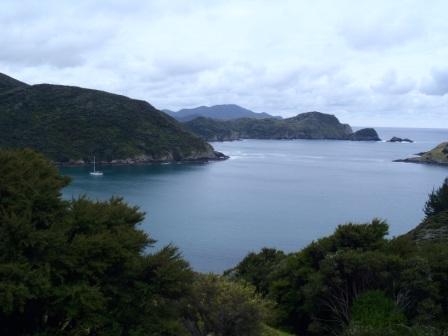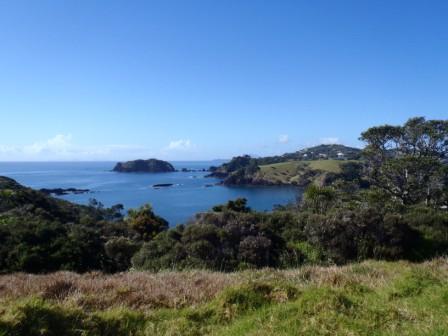A new Blogpost at last!!

VulcanSpirit
Richard & Alison Brunstrom
Wed 28 Nov 2012 09:16
|
Sorry to keep you all waiting on tenterhooks - and
I know you have been because I've had several complaints - all I can say is that
I've been busy and rather lost the will for a while.
Since we were last heard of with NZ in sight just
over three weeks ago a lot has happened. We checked in to NZ at Opua on the
lovely Bay of Islands (where the fascinating Treaty of Waitangi (pronounced
Whytangi) was signed, ceding NZ to the UK, and of which more of course, when
I've found it out), we've relocated to Whangarei (pr. Fangaray), capital of the
Northland Region, and we are now out of the water working hard on the boat's
annual maintenance (a lot to do this time, even more than we'd expected but not
as bad as we'd feared (again, more later).
To start with though, just a taste of North
Island's lovely coastline:
 This is Whangamumu (pr. Fangamoomoo), on the coast
south of the Bay of Islands. I'd love to know why the missionaries again chose
to complicate things when rendering Maori as a written language; the English
alphabet has a perfectly good 'eff' sound, so why unnecessarily spell it 'wh'??
We are out of the Tropics, so no fringing reef and therefore a familiar look to
the coast - similar but different to northern Europe. Whangamumu had a whaling
station for a few years at the beginning of the nineteenth century; it's ruins
are still visible. The whalers here used nets to catch whales travelling up the
coast (uniquely in the world, I think), a traffic which had probably been taking
place for a few million years but wiped out by Europeans in a generation.
Tragic. But Whangamumu remains a beautiful place, now entirely uninhabited (New
Zealand's excellent Department of Conservation has bought the area and is
returning it to native bush (some of it previously a cattle ranch).
And here are a couple of shots from the headland at
Tutukaka, a bit further south. These could easily be in Devon, until you notice
the tree ferns, or hear a bellbird (really does sound like a bell) or see a
pukeko (a goose-sized moorhen on long legs):
 The first shot is looking south across the natural
harbour entrance towards Auckland. The coast is volcanic and remarkably rugged
in parts but with some lovely sandy bays and river estuaries and very sparsely
populated.
The view below is looking inland from the end of
Tutukaka Head with the very protected harbour on the left. It is amazing,
considering how rugged the coastline is, how generally flat this part of
Northland is compared to what we have become used to with volcanic islands in
the Pacific.
 We like New Zealand very
much.
|